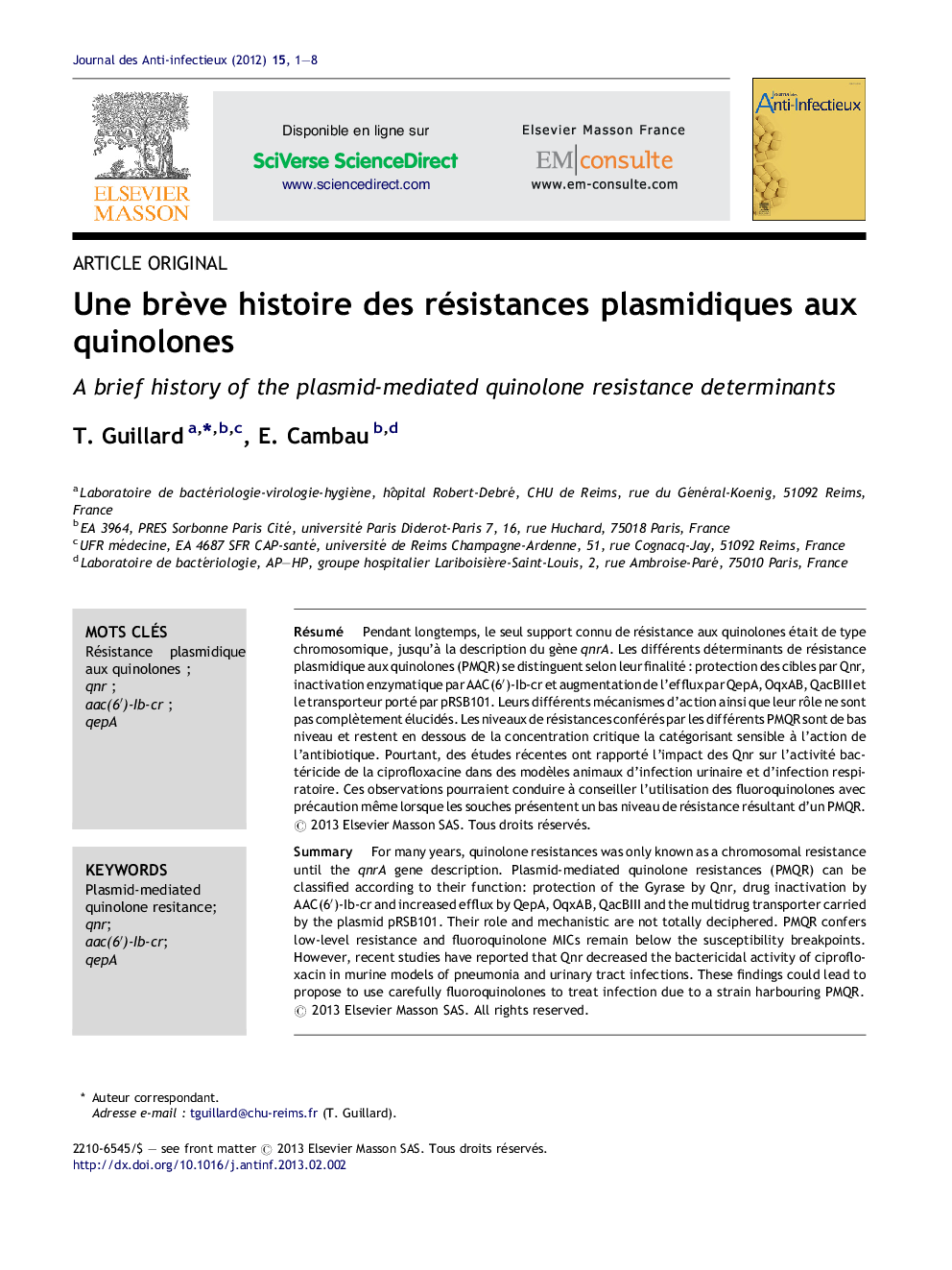| Article ID | Journal | Published Year | Pages | File Type |
|---|---|---|---|---|
| 3405419 | Journal des Anti-infectieux | 2012 | 8 Pages |
Abstract
For many years, quinolone resistances was only known as a chromosomal resistance until the qnrA gene description. Plasmid-mediated quinolone resistances (PMQR) can be classified according to their function: protection of the Gyrase by Qnr, drug inactivation by AAC(6â²)-Ib-cr and increased efflux by QepA, OqxAB, QacBIII and the multidrug transporter carried by the plasmid pRSB101. Their role and mechanistic are not totally deciphered. PMQR confers low-level resistance and fluoroquinolone MICs remain below the susceptibility breakpoints. However, recent studies have reported that Qnr decreased the bactericidal activity of ciprofloxacin in murine models of pneumonia and urinary tract infections. These findings could lead to propose to use carefully fluoroquinolones to treat infection due to a strain harbouring PMQR.
Keywords
Related Topics
Health Sciences
Medicine and Dentistry
Infectious Diseases
Authors
T. Guillard, E. Cambau,
